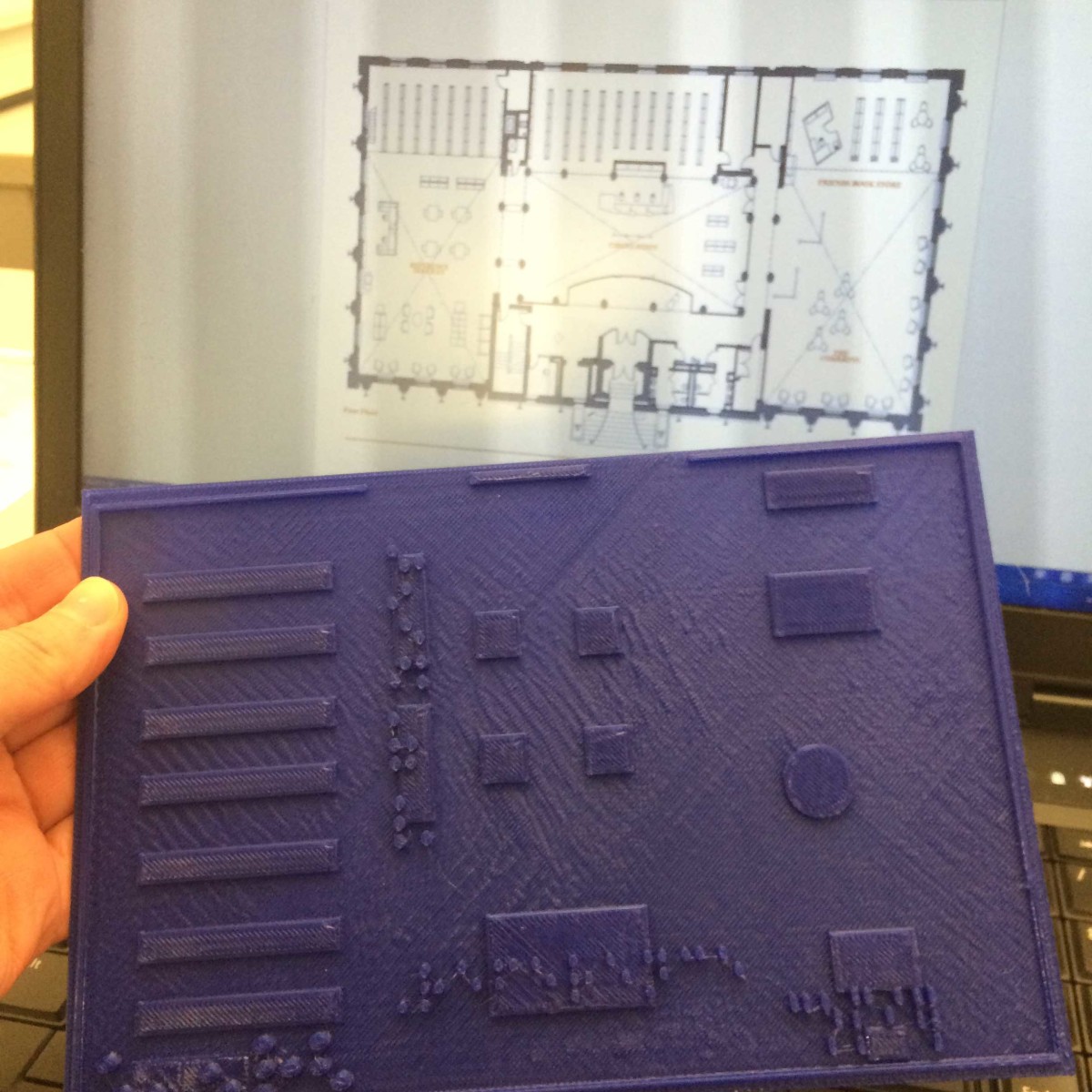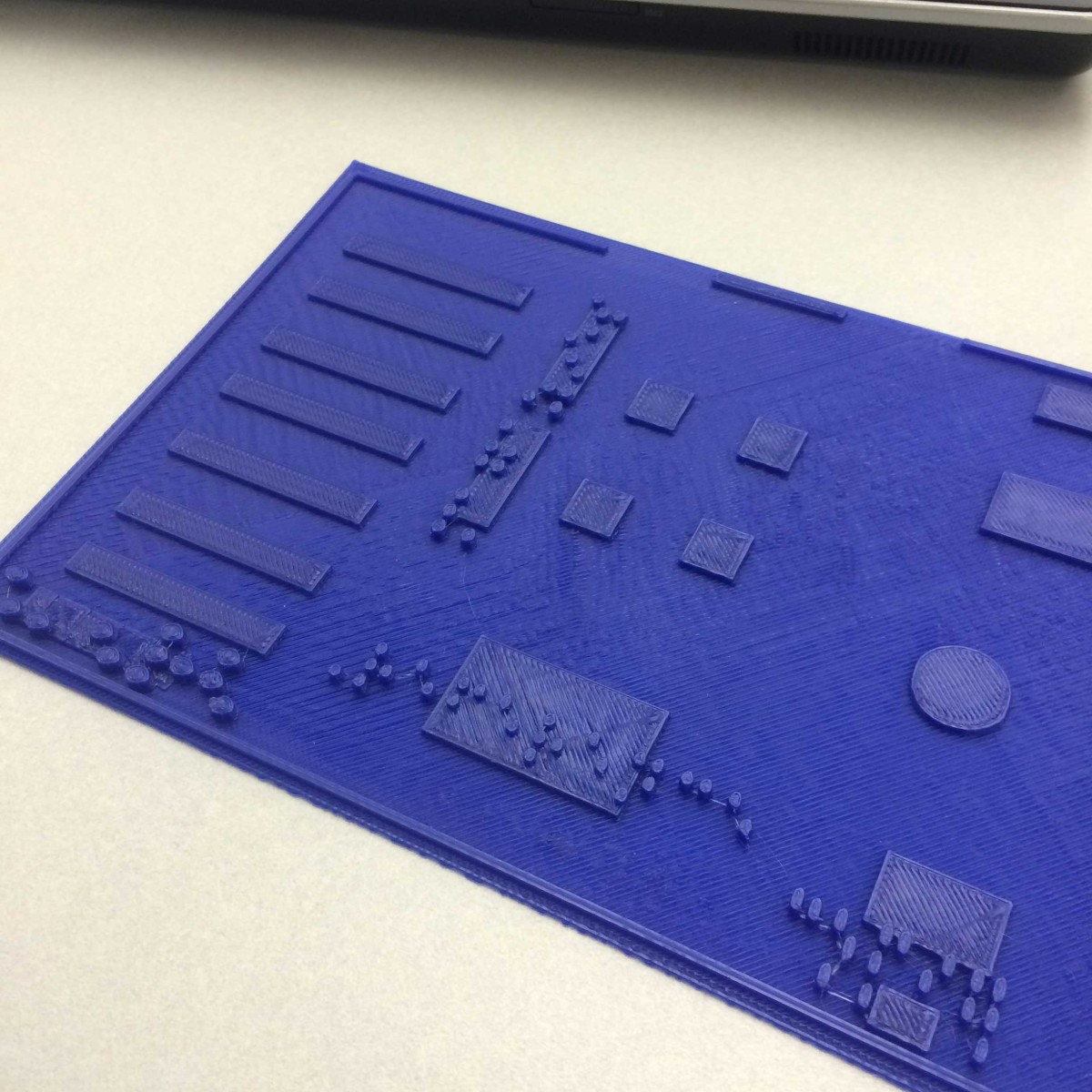About this time last year, folks from the Division for the Visually Impaired (DVI) and the Wilmington Public Library were in talks about possible projects to help the community’s visually impaired.
They had a eureka moment after Derek Alexander, DVI’s entrepreneurial specialist and business consultant on employment, helped a visually impaired woman working in an administrative position by making her a tactile map of a desktop phone. With it, she knew how to use the phone more easily.
Alexander and Carl Shaw, the library’s inspiration space coordinator (that means he’s in charge of providing outreach and career development resources), talked about similarly using 3D printing to make downtown Wilmington more navigable.
We want to stay in tune with the needs of the community we serve, and that's constantly evolving.
They narrowed the field and decided to start with the downtown library itself: In an effort to be more inclusive there, they agreed on creating a tactile map of the inside of the building, so that the visually impaired can better understand the layout. (Though it wasn’t their inspiration, think of the wooden miniatures from All the Light We Cannot See, but in plastic.)
Delaware’s public library system is home to 14 3D printers across a dozen libraries, said Sarena Fletcher, Delaware Division of Libraries’ administrative librarian. The state’s libraries began acquiring 3D printers in 2013, she said.
So how does one make a tactile map of the library? Shaw sent Fletcher an image of the floor plans, which she opened in Microsoft Publisher. There she traced the basic shapes of key library features, like the reference desk and entrance, and saved that image as a .jpg. Then Fletcher opened the .jpg file in Inkscape and converted it to an .svg file. She imported the .svg file into Tinkercad to create an .stl file, which is the kind of file needed to enter into a 3D printer.
Fletcher and Shaw are still working on protoypes, and their next step is to work with the DVI to figure out how to add braille to the 3D model.
“The challenge is going to be making a finished product big enough so the braille is legible and there’s enough room for the braille to be placed,” Shaw said.
The map will probably be a couple of feet tall by a couple of feet wide, he said, and expects the finished product to be complete no later than mid-April.
He plans to put the map at an easily accessible spot, which will probably be at the circulation desk.
All of this begs the question: Do visually impaired people actually go to the library?
Alexander, from the DVI (and who’s legally blind himself), says attendance is limited, but that’s something he hopes will change with the tactile map. Fletcher and Shaw shared those sentiments.
Alexander pointed out that there are offerings at the library for visually impaired people, of course, like audio books, computers with software that enlarge print on screens and large-print books.
In his role at DVI, Alexander helps prepare the visually impaired for employment, and he said he’d like to see more of them get out of their comfort zones and either do job research or check out audio books at the library. “What ends up happening most of the time is people come here to my facility in New Castle,” he said, in reference to job searches. “They’re just around all other blind people, but the world is not like that.”
He and Shaw expressed enthusiasm that the library map could inspire similar 3D projects for other locations. Alexander said he’d also like to see tactile maps supplemented with audio descriptions.
Fletcher said she hopes the library map will begin a conversation about other things the library can offer the visually impaired.
Shaw agreed. “We want to stay in tune with the needs of the community we serve,” he said, “and that’s constantly evolving.”
Join the conversation!
Find news, events, jobs and people who share your interests on Technical.ly's open community Slack

What US entrepreneurs can learn from a Chinese policy wonk: Build with your values in mind

Fundraising is harder now, founders say, so ‘be able to tell a story’

Inside Delaware’s ambitions to become a vibrant, fun hub that draws in tech workers



